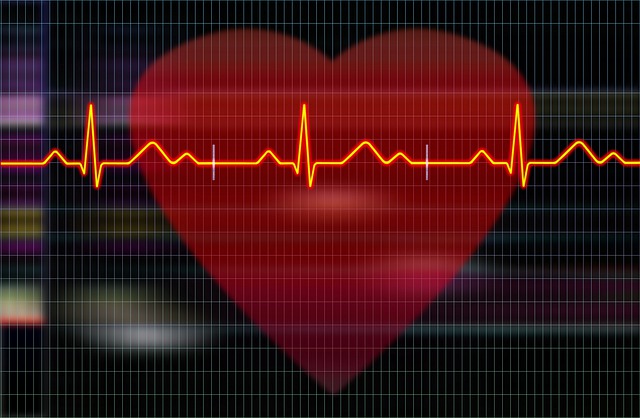Systemic high blood pressure affects around one billion people worldwide. High blood pressure (BP) has been shown to be a risk factor for stroke, congestive heart failure, myocardial infarction, peripheral vascular disease, and end-stage renal disease.
The importance of BP as a risk factor was highlighted by the World Health Organization, which identified systemic arterial hypertension as one of the most important causes of morbidity and premature mortality in developed and developing countries.
In contrast, good physical condition and frequent physical exercise contribute to the management of this condition. Low aerobic fitness constitutes a risk factor for the development of cardiovascular diseases, even for hypertensive individuals, and greater aerobic fitness reduces mortality and cardiovascular morbidity.
In fact, previous research has found that aerobic exercise can reduce systolic blood pressure (SBP) and diastolic blood pressure (DBP) values by 3.9% and 4.5%, respectively, while resistance exercises reduce SBP and blood pressure (DBP). DPB by 2% and 4%, respectively.
Epidemiological studies indicate that more intense physical activity is associated with a decrease in blood pressure, although its effects may change, depending on different modalities and dosage parameters, specifically the duration, frequency and workload or intensity of the program and the session.
Therefore, research on the mode, intensity, frequency and duration of sessions should be carried out and contribute to an improvement in the effectiveness of physical activity.
| Purpose of the review |
The objective of this meta-analysis is to compare the effects of moderate intensity continuous training (MICT) and high intensity interval training (HIIT) on blood pressure in hypertensive individuals.
Recent findings
Continuous aerobic training programs are successful in promoting health and are effective in modulating systolic blood pressure (SBP) and diastolic blood pressure (DBP). However, HIIT appears to be superior to MICT for improving cardiorespiratory fitness.
| Results |
We searched PubMed, ScienceDirect, and Google Scholar for randomized clinical trials comparing the chronic effects of HIIT and MICT on BP in hypertensive subjects.
Pre- and post-intervention changes in maximal oxygen uptake (VO2max) between MICT and HIIT were analyzed. Both interventions presented significant differences in SBP (MICT: mean difference (MD), 3.7 mm Hg [95% CI = 2.57, 4.82], p <0.00001; and HIIT: MD, 5.64 mm Hg [95% CI = 1.69, 9.52], p = 0.005) and in DBP (MICT: MD, 2.41 mm Hg [95% CI = 1.09, 3.72], p = 0.0003; and HIIT: MD, 4.8 mm Hg [95% CI = 2.9, 6.7], p <0.00001) compared to the control group.
No differences were found in SBP values (MD, 1.13 mm Hg [95% CI = - 0.01, 2.27], p = 0.05); however, differences were found between groups in BPD (MD, 1.63 mm Hg [95% CI = 0.83, 2.44], p = 0.0001).
In the secondary outcome, both interventions increased VO2max compared to the control groups (MICT: MD, 1.30 ml/kg/min [95% CI = 0.92, 1.68], p < 0.00001; and HIIT: MD, 4.90 ml/min kg/min [95% CI = 3.77, 6.04], p < 0.00001), and HIIT promoted greater improvement than MICT (MD, 2.52 ml/kg/min [95% CI = 1.90, 3.13], p < 0.0001).
| Discussion |
The primary objective of the present study was to investigate the effects of aerobic training on blood pressure in people with hypertension, which affects approximately 14% of the world’s population and accounts for 18% of all deaths worldwide.
The main findings were that (i) the MICT and HIIT groups promoted significant reductions in SBP and DBP compared to the control groups; (ii) no significant differences were found in SBP reduction between the MICT and HIIT groups; (iii) HIIT reduces DBP to a greater magnitude than MICT; and (iv) HIIT promoted greater improvement in VO2max than MICT. Both interventions promoted greater increases in VO2max relative to the control groups.
The mechanisms guiding blood pressure reductions after training are related to hemodynamic and neural factors. Specifically, chronic physical activity reduces sympathetic activity, increases vagal tone, and promotes reduction in postexertional peripheral vascular resistance .
Physically trained individuals show adaptations to the chronic effects of exercise, such as increased VO2max, muscle growth, physiological left ventricular growth, and relatively low resting HR. In contrast, people with hypertension may have limitations that restrict physical activity due to obesity or a sedentary lifestyle.
In this sense, it is important that primary prevention has been emphasized for individuals at high risk of essential arterial hypertension, taking into account that hemodynamic, metabolic and hormonal abnormalities, as well as biomarker concentrations, can play key roles in the development of the hypertension.
Regarding SBP, the studies presented in this meta-analysis observed post-intervention reductions supported by Huang et al. who reported a 3.9% reduction in SBP post-intervention when performing aerobic training.
In a comparison of SBP reduction, previous research has shown that there is no difference between the results in the MICT and HIIT intervention groups, which corroborates the results of the present study.
Otherwise, the guideline proposed by Whelton et al. indicates that SBP can be reduced by 5 to 8 mmHg by practicing 90 to 150 min/week of physical activity at 65-75% of HR reserve. Furthermore, significant differences of 3.84 mm Hg and 2.54 mm Hg relative to the control groups were previously reported, consistent with the magnitude decreases found in our meta-analysis with HIIT.
Furthermore, it is observed that a decrease of just 5 mm Hg in SBP can reduce the risk of mortality from stroke by 14% and from coronary heart disease by 9%.
Conclusion
|
















